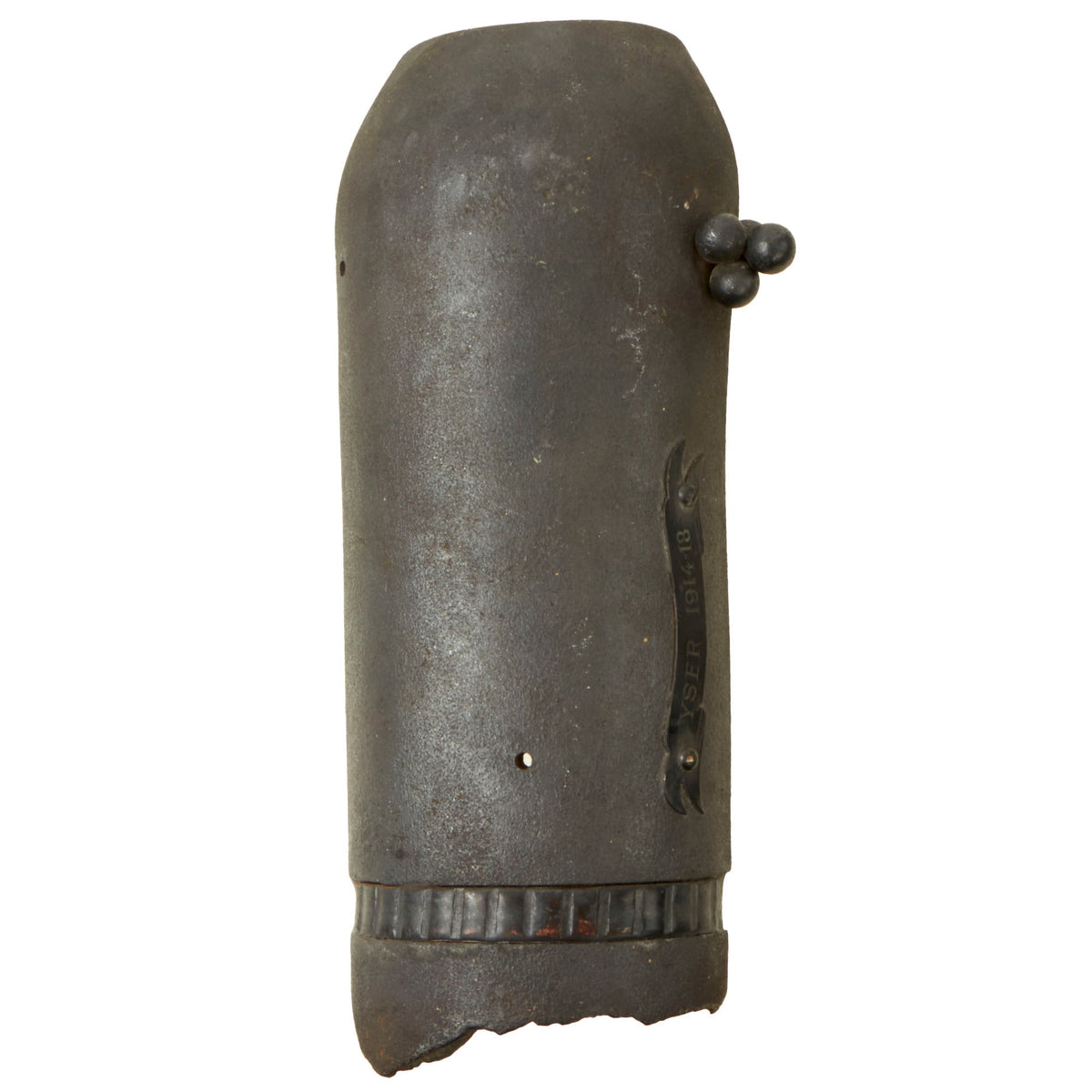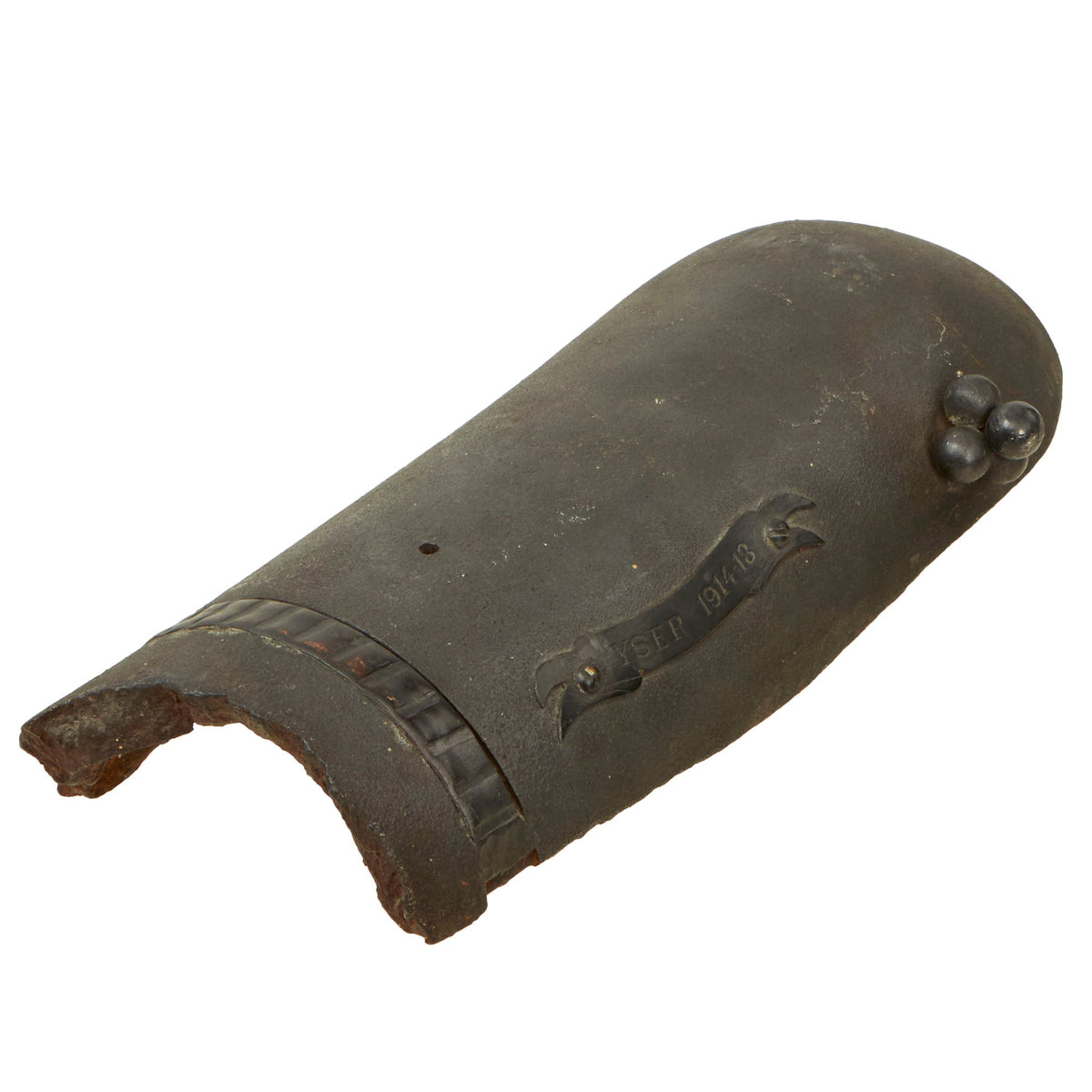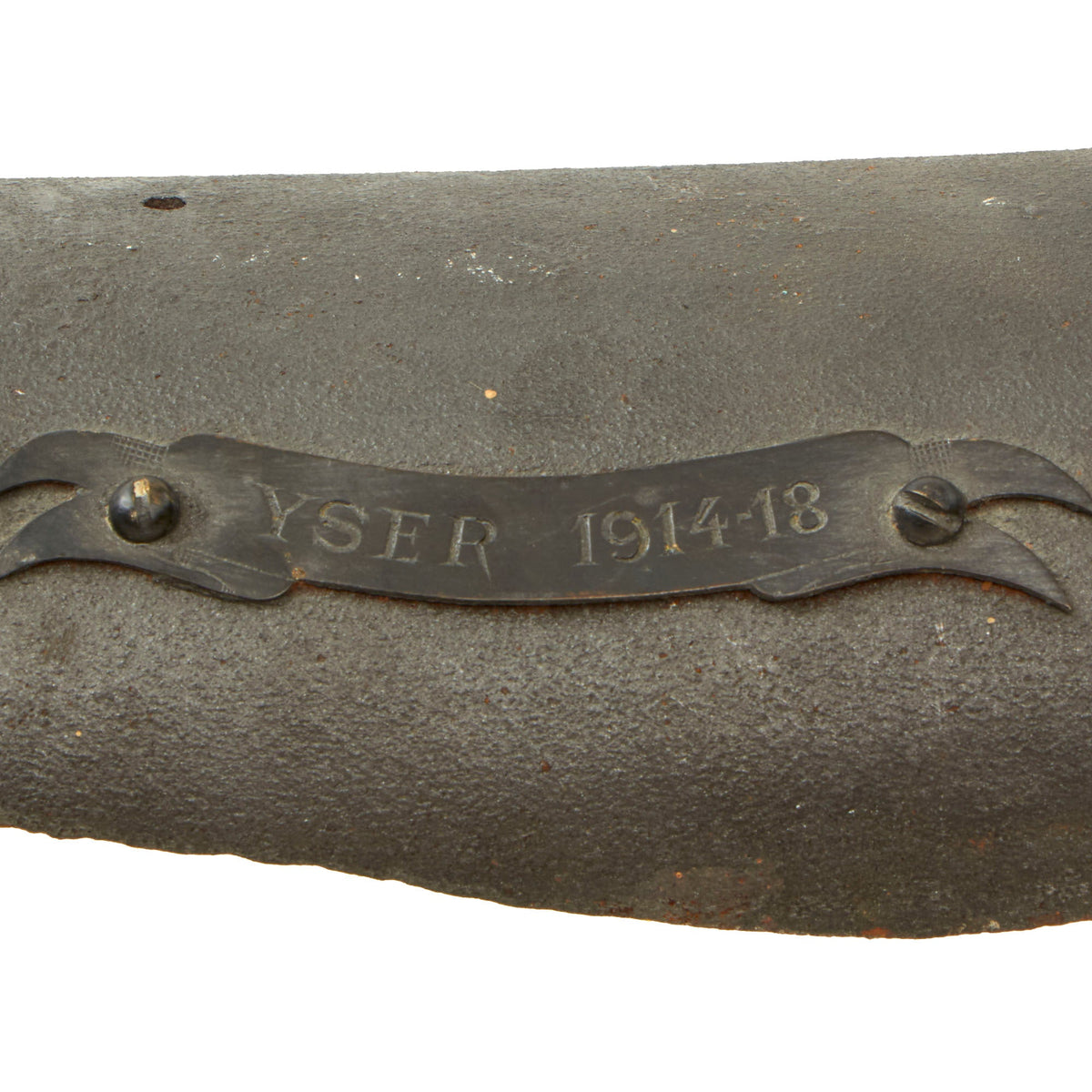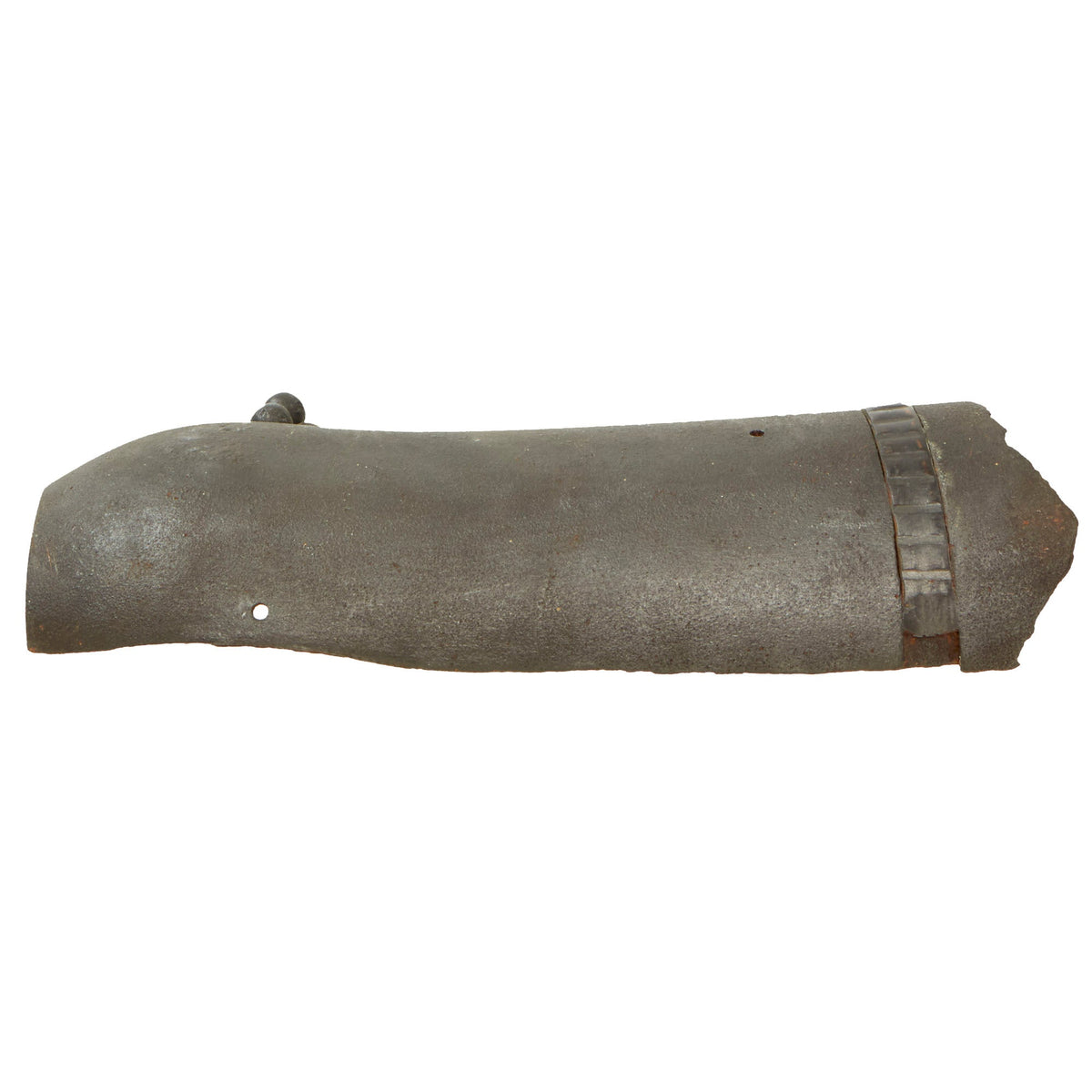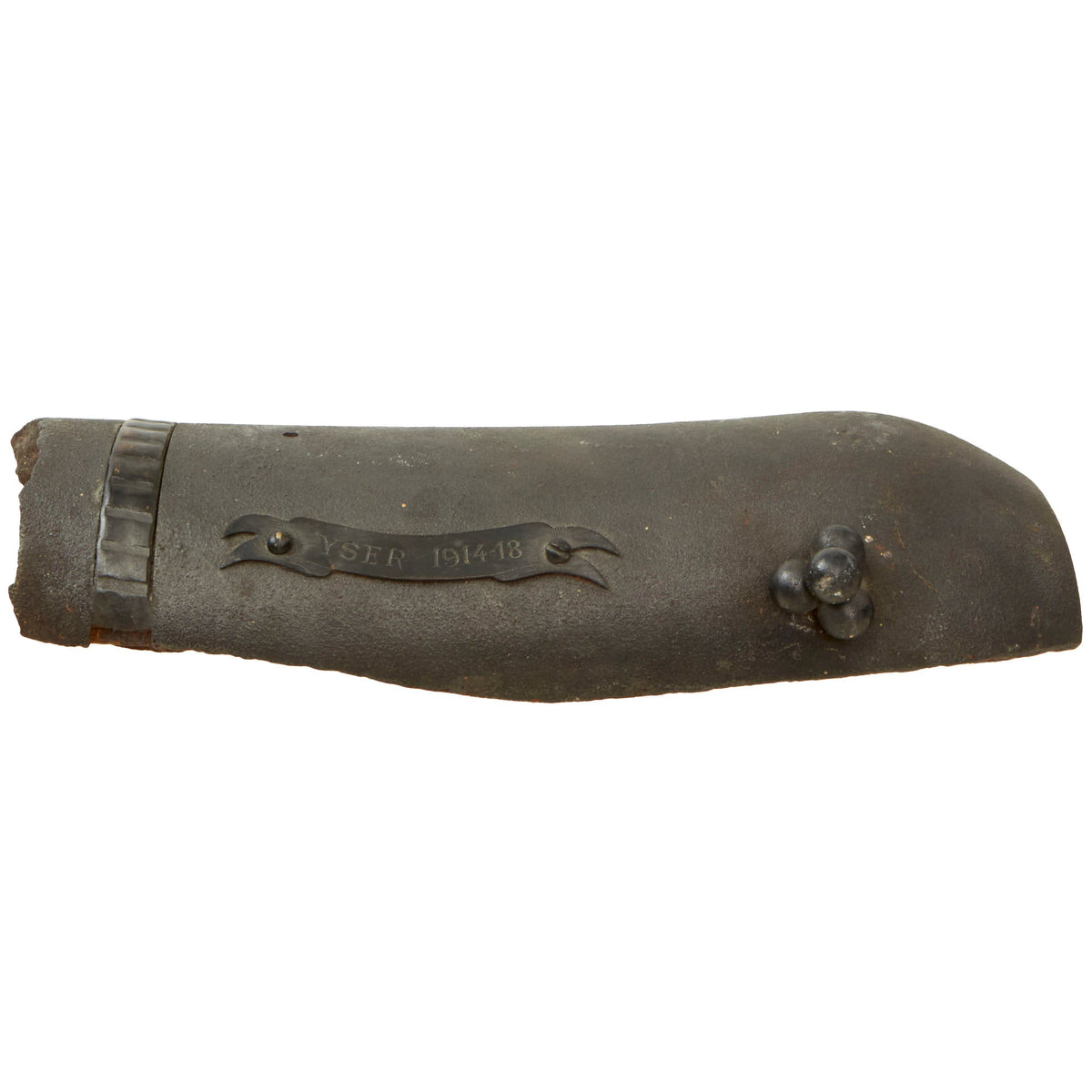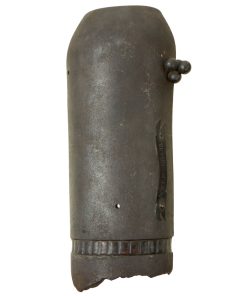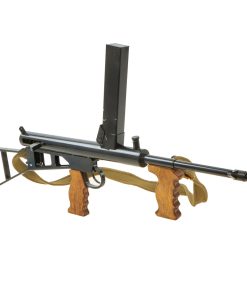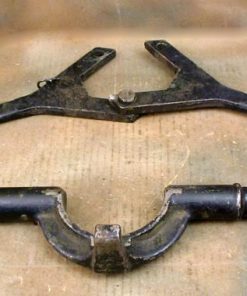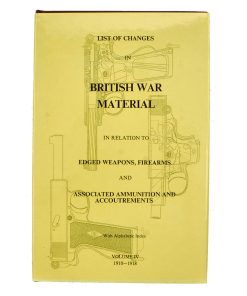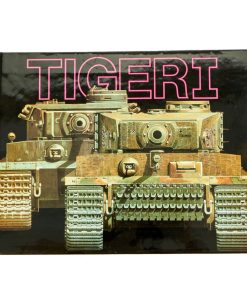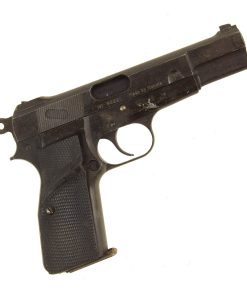Original Belgian WWI Yser 1914 – 1918 Trench Art Large Shell Fragment Piece with Shrapnel Balls Original Items
$ 295,00 $ 118,00
Original Item. Only One Available. This is a tremendous shell fragment recovered from the Yser Front in Belgium which saw heavy fighting from October 1914 until November 1918. Following the Battle of Yser in October 1914 when the Belgian Army succeeded in stopping the German advance, the front was held mostly statically for the rest of the war.
The shell fragment is very large, roughly 4½ x 11½ x 1¾” with the height coming from the shell’s curvature. The shell’s driving band is still retained in the majority of where it is visible. There have been several holes drilled for placement of small clusters of shrapnel balls, of which only one cluster of 4 remains. There is a small ribbon-shaped plaque riveted to the side of the shell reading YSER 1914-1918.
This is a stellar piece of trench art that will fit very well in any WWI trench art/artillery collection. Comes ready for further research and display.
The Battle of the Yser was a battle of the First World War that took place in October 1914 between the towns of Nieuwpoort and Diksmuide, along a 35 km (22 mi) stretch of the Yser River and the Yperlee Canal, in Belgium. The front line was held by a large Belgian force, which halted the German advance in a costly defensive battle.
The victory at the Yser allowed Belgium to retain a small strip of territory, with Germany in control of 95 per cent of Belgian territory, which made King Albert a Belgian national hero, sustained national pride and provided a venue for commemorations of heroic sacrifice for the next hundred years.
Fast Shipping with Professional Packaging
Thanks to our longstanding association with UPS FedEx DHL, and other major international carriers, we are able to provide a range of shipping options. Our warehouse staff is expertly trained and will wrap your products according to our exact and precise specifications. Prior to shipping, your goods will be thoroughly examined and securely secured. We ship to thousands clients each day across multiple countries. This shows how we're dedicated to be the largest retailer on the internet. Warehouses and distribution centres can be located throughout Europe as well as the USA.
Note: Orders with more than one item will be assigned a processing date depending on the item.
Before shipping before shipping, we'll conduct a thorough inspection of the items you have ordered. Today, the majority of orders will be delivered within 48 hours. The delivery time will be between 3-7 days.
Returns
The stock is dynamic and we cannot completely manage it because multiple stakeholders are involved, including our factory and warehouse. So the actual stock may alter at any time. It's possible that you may not receive your order once the order has been made.
Our policy is valid for a period of 30 days. If you don't receive the product within 30 days, we are not able to issue a refund or an exchange.
You can only return an item if it is unused and in the same state as the day you received it. You must have the item in its original packaging.
Related products
Uncategorized
Uncategorized
Australian WWII Owen MK1 Machine Carbine SMG Custom Fabricated Replica with Sling Original Items
Uncategorized
Australian WWII Owen MK1 Machine Carbine SMG Custom Fabricated Replica with Sling Original Items
Uncategorized
Uncategorized
Band of Brothers ORIGINAL GERMAN WWII Le. F.H. 18 10.5cm ARTILLERY PIECE Original Items
Uncategorized
Uncategorized
Uncategorized
Uncategorized
Uncategorized
Uncategorized
Uncategorized
Uncategorized
Uncategorized
Uncategorized
Uncategorized
Uncategorized
Angolan Rebel 1970s era 60mm Inert Display Mortar from Angolan Civil War Original Items
